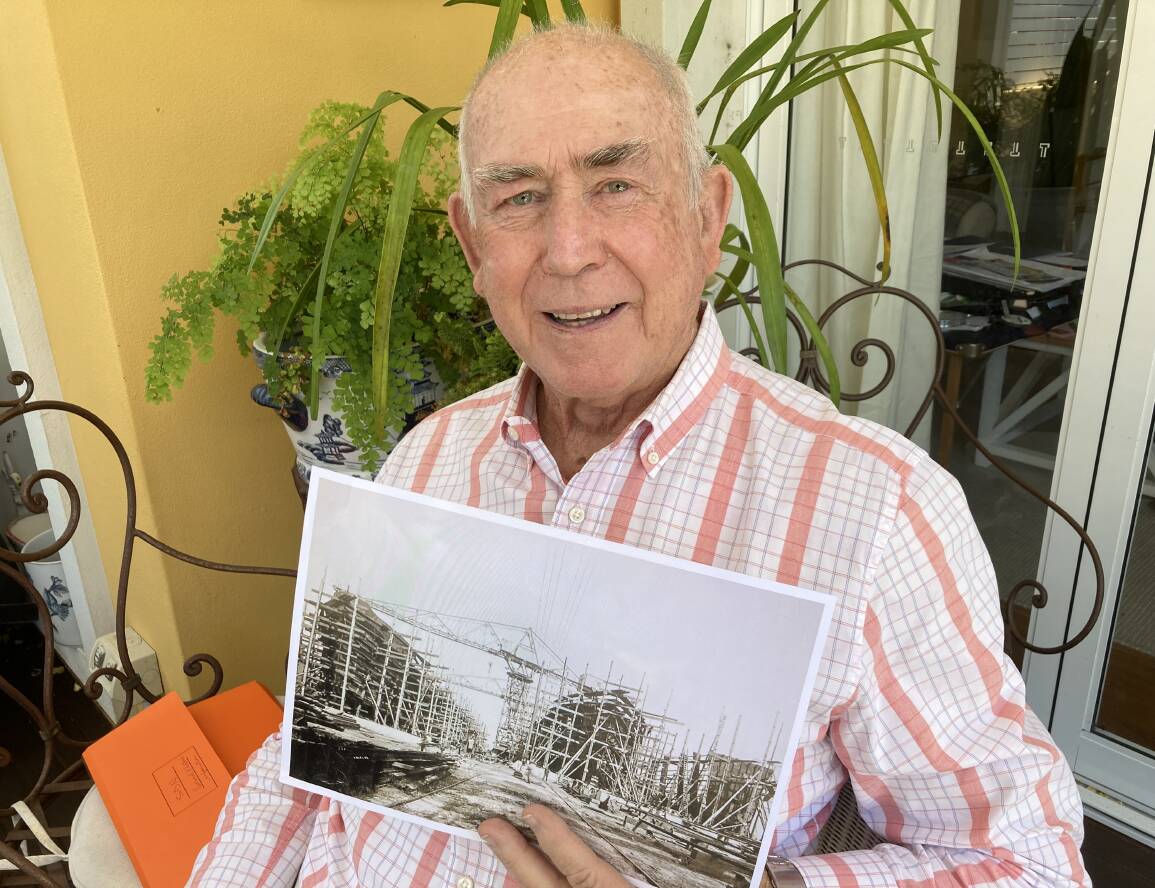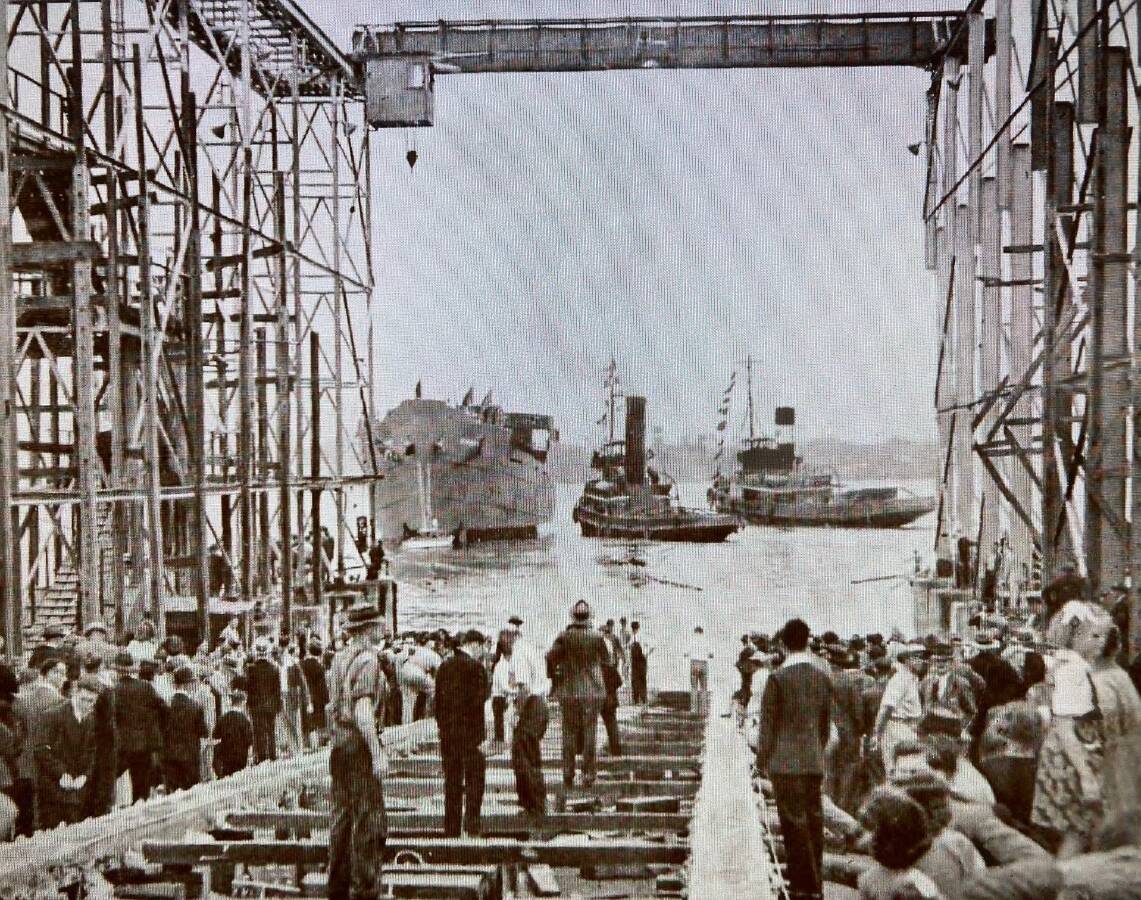
The excitement was palpable.
At first, nothing seemed to happen then the big ship slowly slid backwards down the slipway. Acres of chains rattled trying to slow the passage of the steel behemoth mixing with the smell of hot grease from the friction of the metal giant breaking free of its bonds.
Then, as the ship's stern finally hit the water in Newcastle Harbour basin, the waiting crowd of thousands erupted in cheers. Simultaneously, harbour ships joined in, riotously sounding horns and sirens in celebration. It was deafening.
Welcome to another successful ship launching at the Newcastle State Dockyard opposite today's Honeysuckle precinct. Such a joyous scene was a regular event decades ago before the dockyard, haemorrhaging money, suddenly closed on March 3, 1987.
It seemed unthinkable. Operating since 1942, the mighty dockyard had built at least 45 vessels from warships to passenger vessels to oil tankers, dredges, ferries and the lifting span of Hexham bridge. Here, 600 ships had also been repaired during World War II. All's now gone forever.
But incredibly, it was not the first time Newcastle had lost such a major industry. Some 54 years before, Newcastle lost its original dockyard, in the harbour's north, opposite the old BHP Steelworks. Called Walsh Island, with scores of buildings, it employed 2500 workers and was then Newcastle's second largest employer.
Today, nothing remains, although some of the biggest structures were later dismantled and transported downriver to form the nucleus of the new dockyard at Dyke Point, in 1942.
Now, former Labor politician John Price is keen to preserve some memory of Australia's great Hunter shipbuilding heritage before it's totally forgotten
And he's ideally placed to do so. Yet, it's a race against time as many original participants have long gone. Surprisingly, many of the records of Newcastle Harbour's past shipbuilding enterprises have also been wilfully destroyed.
That's why the no-nonsense Price has been obsessed for the past four years researching the yards for a proposed book to publish next year after ploughing through surviving annual reports and "siphoning out the bullshit".
Many people will remember John Price as the former Waratah MLA (1984-99) and as Maitland's MP from 1999 to 2007, or as the first deputy speaker of the NSW Parliament (1999-2007) among his long list of impressive achievements.
Not bad for a Mayfield-born former fitter who began his career as an apprentice at the State Dockyard in 1956, rising later to shipbuilding marketing manager there.
"There are books about Sydney's Cockatoo Island dockyard, but no book specifically on Newcastle shipbuilding, except for an odd PHD from students," Price tells Weekender.
Price said that around 1981-1982 while working at the Dyke Point yard, he discovered employees burning "most valuable" old records and about to dispose of a little wooden cabinet containing priceless glass negatives of ships built at the earlier, historic Walsh Island shipyard.
"There was a fire in the yard. It was my section. I immediately ordered a stop to the destruction and contacted the State Archives who were up here like a shot to salvage what they could," Price says.
"But when I talk about Walsh Island these days no one knows what I'm talking about."
He said its closure was a deliberate political decision by a conservative NSW government long ago. It meant completely removing any trace of a major Australian shipbuilding facility between 1914 and 1933 on a vast man-made island opposite the former BHP Steelworks site at Port Waratah.
Today, this eastern end of what is now called Kooragang is filled with industries, but once 80 vessels from tiny ships, tugs, dredges, barges, punts, railway bridges and even steel train carriages were built here. Two airport runways were also started with famous aviator Sir Charles Kingsford Smith proposing to make it a hub, a staging post for his aerial mail service.

"But all that's left now is one palm tree on the island's (southern) point. And even that Walsh Point has been renamed," Price says.
"The island manager's house was there, but it was also demolished and its swimming pool filled in. I find that extraordinary.
"For a period, Walsh Island was the largest engineering works in the Southern Hemisphere. But then it was obliterated. There's nothing left. The government couldn't sell it, so they removed everything, with all the big building frames later moved down river (to Dyke Point) in 1942, in World War II, to create a new State Dockyard which then lasted until 1987," Price says.
"The Walsh Island engineering works and shipyard was built at the same time as BHP. There was only one (Hunter River) channel which the government could dredge, but it serviced both industries.
"Creating Walsh Island was the only reason Stockton got a water supply. Pipelines came across the BHP site to service the island's needs, then went onto Stockton.
"But it suffered the same problem as Sydney's Cockatoo Island.
"Being surrounded by water, everything had to be transported over there. It was a very costly operation and regarded by the (Labor) government's opponents as a socialist exercise.
"And once NSW Premier Lang was out of office, that was the end. This island industry was killed off."
The former MP said the Walsh Island shipyard even built a 15,000 floating dock in 1930 to repair ships. This was scrapped in 1977 and replaced with a one built in Japan.
Called Muloobinba, and later operated by Forgacs, it was finally sold and left Newcastle harbour in December 2012.
"It's now in Senegal, in West Africa, I believe," Price says.
Perhaps one of the lesser-known roles of the versatile State Dockyard was it playing host to a team of apprentices from the Hunter Valley Training Company. Here they completed a three-year overhaul of the iconic steam locomotive 3801 in November 1986.
Another largely unknown, but lasting legacy of the yard, was distributing $42,958 remaining from the former State Dockyard Recreation Club (SDRC).
"It ended in 1990 with few members left. The club was only paying tax on the interest, so the money went to Shortland Wetlands Centre to build a bird watching platform. It's enormous, made of logs and two-storeys high," he says.
Speaking then on contemporary matters, Price believed Newcastle Harbour had "no chance at all" of becoming an east coast nuclear submarine base, if only for the reason there were no suitable facilities at present to do so.
Price said that if there was a theme to his yet untitled, future book, it was that successive governments hadn't learned lessons from history.
"We're an island state and even reliant on fuel from overseas. We don't seriously manufacture here anymore. All the trains, boats, rail carriages come from other countries," Price says.
"Look at our newest, expensive Antarctic exploration vessel (the $528million icebreaker 'Nuyina').
"It was built in Romania, but the one built before that in 1989 (which lasted 31 years) was the 'Aurora Australis' launched by Carrington Slipways at its Tomago shipyard."
WHAT DO YOU THINK? We've made it a whole lot easier for you to have your say. Our new comment platform requires only one log-in to access articles and to join the discussion on the Newcastle Herald website. Find out how to register so you can enjoy civil, friendly and engaging discussions. Sign up for a subscription here.







